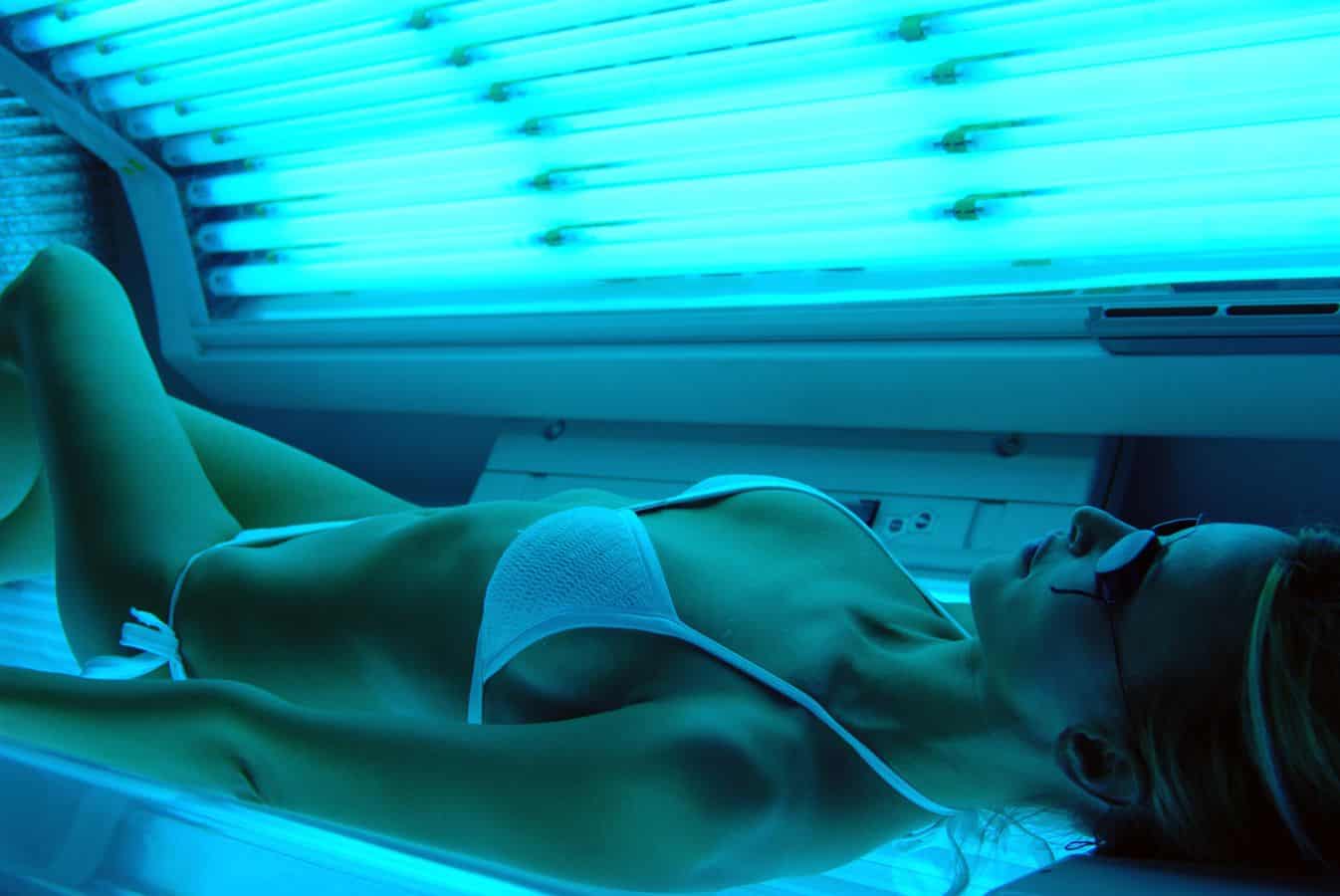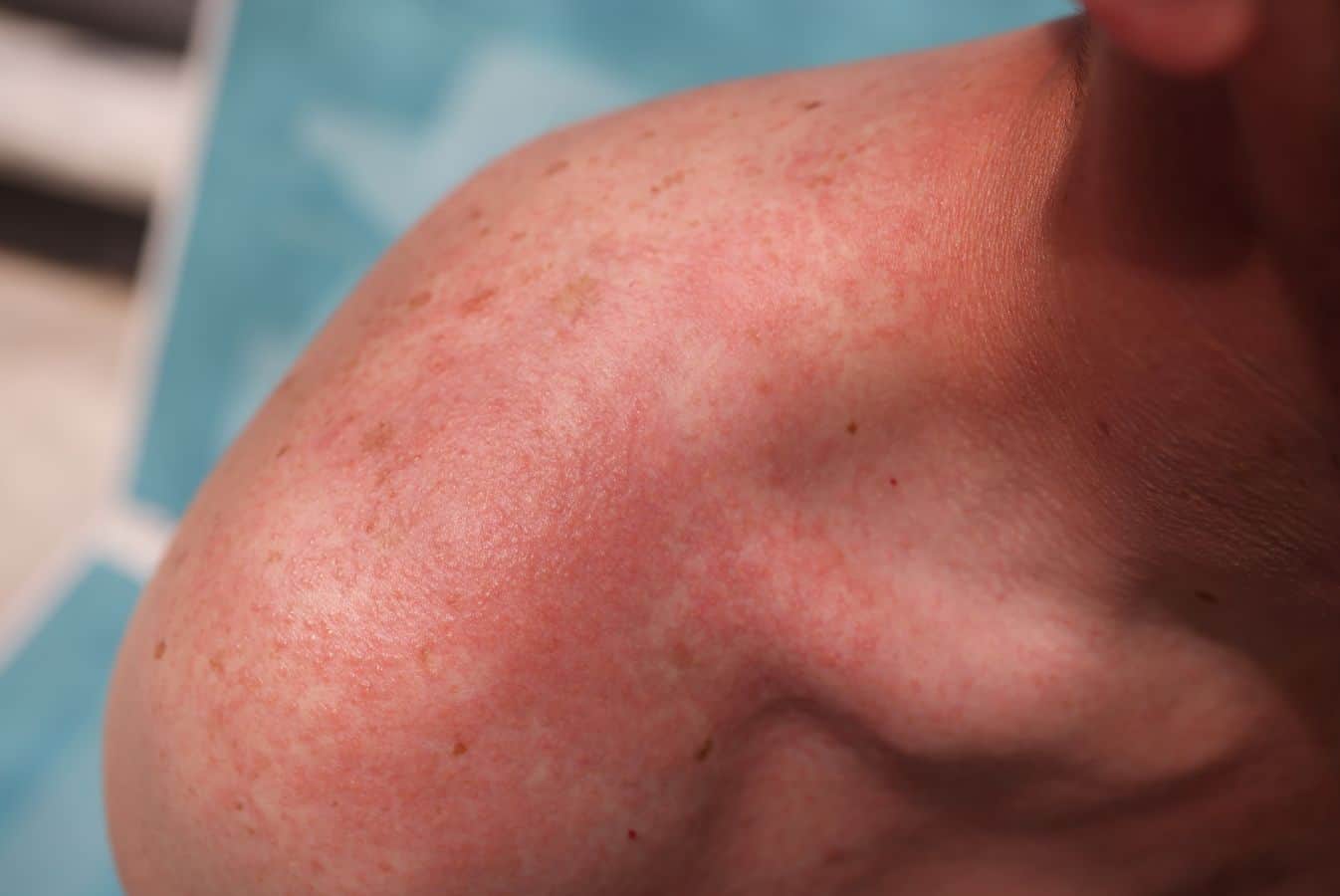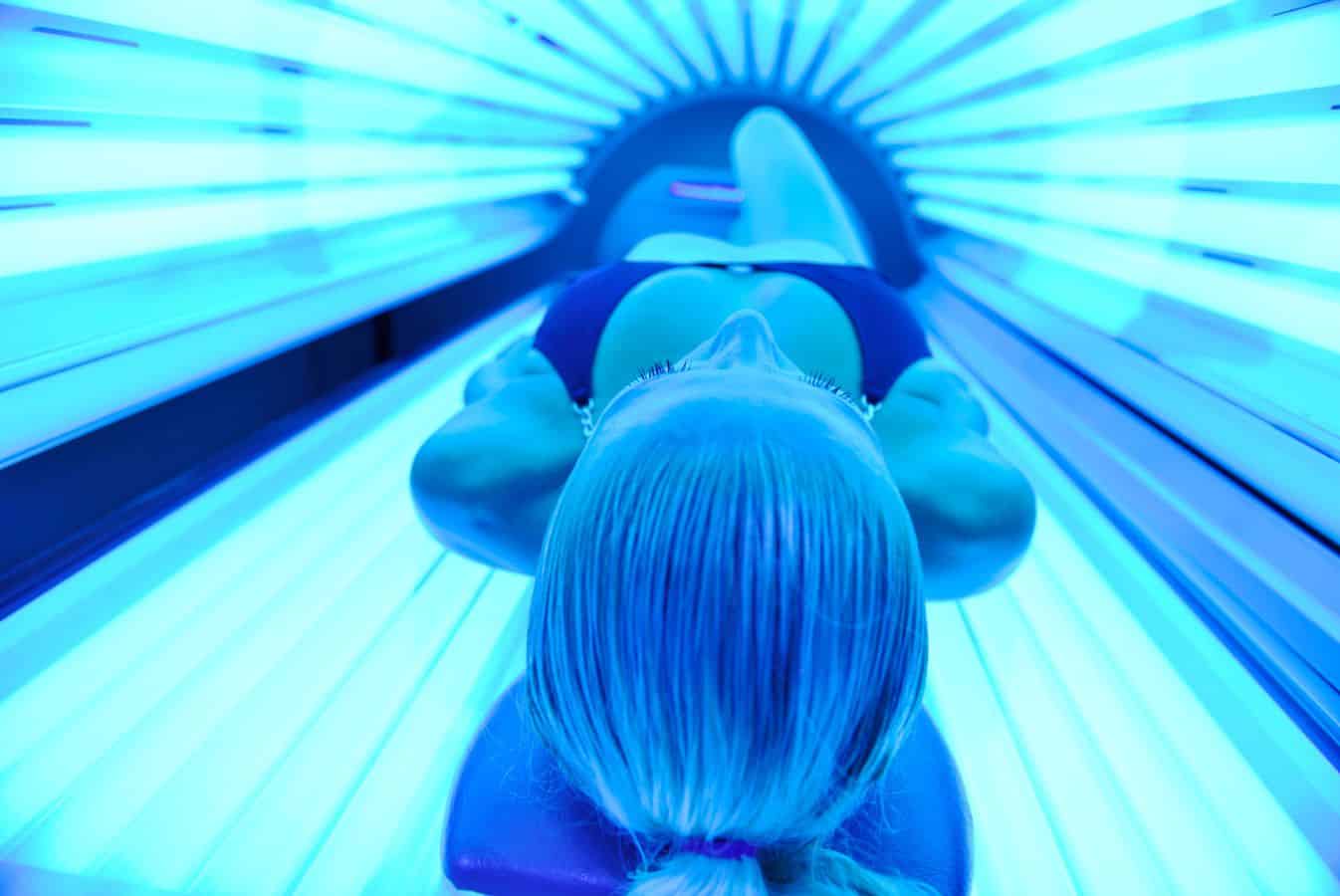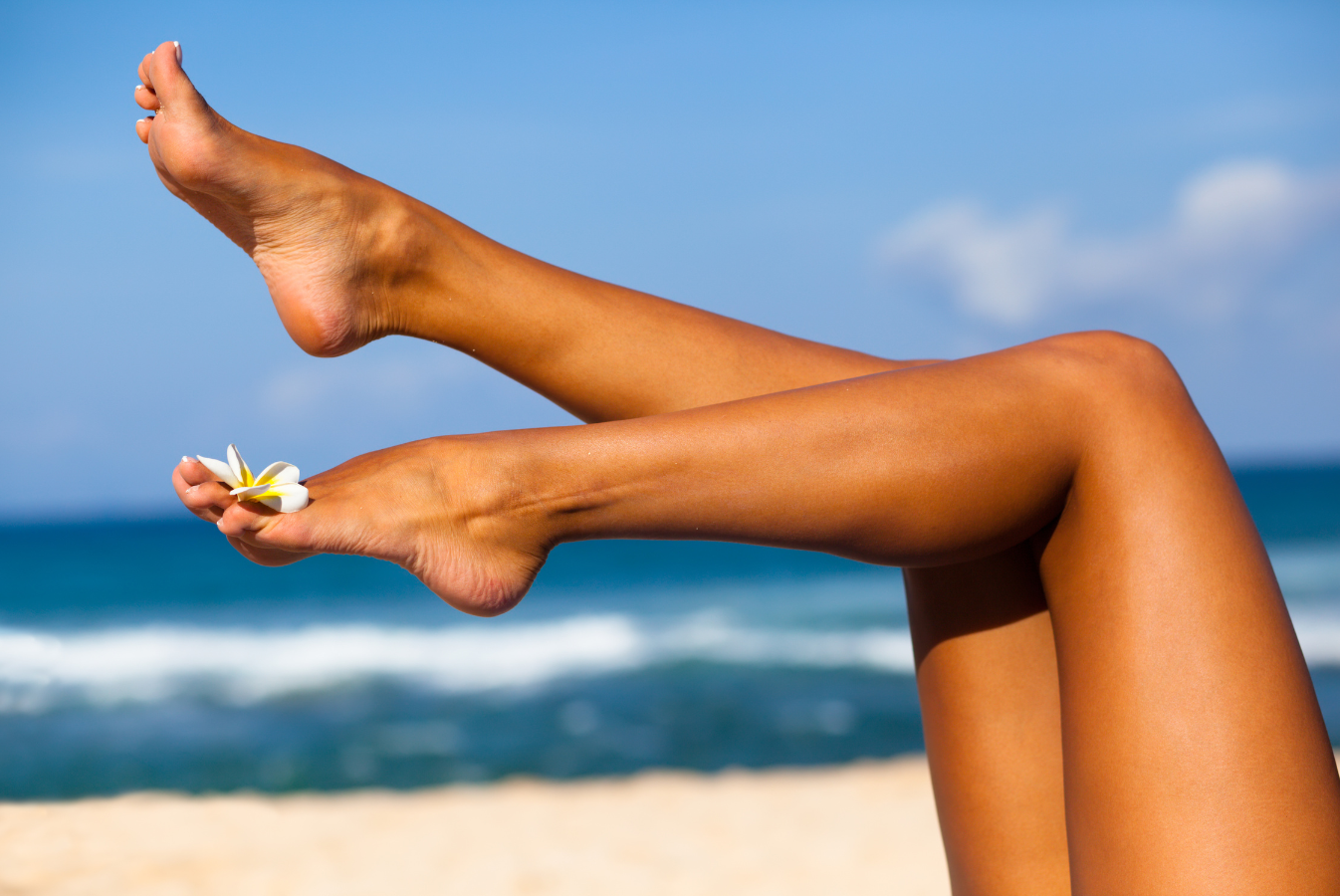Have you ever stepped out of a tanning bed only to discover itchy, red patches on your skin? Ah, the dreaded tanning bed rash – a sign that your skin is calling a time-out on your tanning sessions. But don’t fret, most of these rashes are not too severe and can be soothed with some trusty drugstore buys. like hydrocortisone cream or antihistamine lotion.
Table of Contents
A Tanning rash is when your skin gets irritated after using a tanning bed for too long. It can look different for different people, but usually, it makes your skin red, itchy, and flaky.
What Makes Tanning Bed Rashes Different From Other Skin Rashes?
Compared to other rashes, tanning ones are distinct in that they have the potential to become chronic if the person continues to overuse tanning.
Prolonged exposure can lead to sun damage, such as wrinkles, age spots, and an increased risk of skin cancer. Moreover, these are more likely to develop in areas that have been frequently exposed to UV rays in a tanning booth.
What are the symptoms of a tanning bed rash?
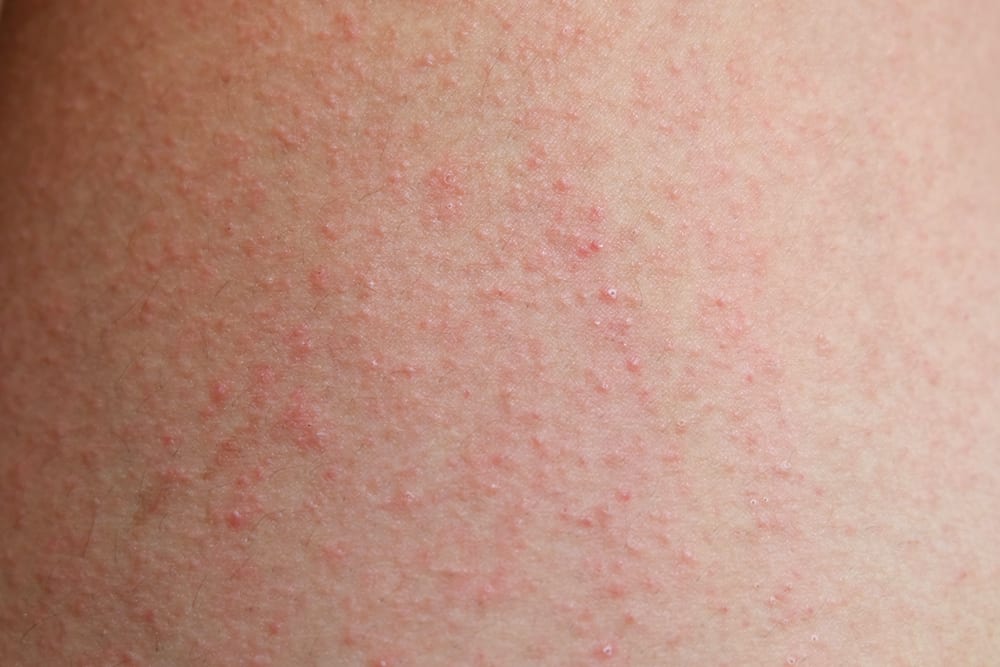
Typical indications include skin dryness, flakiness, redness, and itchiness. Sometimes, hives or tiny blisters may also emerge in severe cases.
What causes a tanning bed rash?
Dry Skin
The main cause is dry skin, which can happen if your skin doesn’t have enough water. When your skin is dry, using a tanning bed for too long can cause it to become irritated.
Dry skin can also feel rough, which makes it rub against the tanning bed more, causing even more irritation. Plus, when your skin is dry, it has a harder time protecting itself from things that can cause redness and irritation.
Allergies
The rash can happen if you’re allergic to lotions or oils used while tanning. When you’re allergic to something, your body tries to fight it off, which can make your skin red and irritated.
Sometimes, chemicals in tanning lotions or cleaning products used on sunbeds can cause a reaction. This can make your skin red, itchy, and bumpy with hives or little bumps.
Overexposure to the Tanning Bed
Staying too long in a sunbed bed can make your skin irritated, especially if you’re more sensitive to the UV rays. Being in the tanning bed too long can also cause other skin problems, like making your skin dry and dehydrated. When your skin is dry, it can get more irritated, red, and even form blisters.
The heat from the tanning bed can make you sweat and lose water, which can make it even worse.
Not Cleaning the Bed Properly
Sunbeds that aren’t cleaned well can cause skin rashes and irritation for a few reasons. When the bed isn’t cleaned right, germs can build up on the surface and cause your skin to become red and inflamed.
Also, strong cleaning chemicals might not be completely wiped off, which can irritate your skin and cause a rash when you touch it. Plus, if the tanning bed isn’t clean, leftover tanning lotions or other products from other people can make you have a reaction and get a rash.
How Common Are Tanning Bed Rashes?
They are a common occurrence that can affect individuals who use sunbeds regularly or occasionally. How often they happen can depend on many things, like how sensitive a person’s skin is and how they tan. Some people might get them more easily, especially if they’ve had skin allergies or other skin problems before.
If a tanning bed isn’t kept clean and well-maintained, that can also cause rashes. Using tanning beds too much or for too long can make it more likely for someone to get a rash from the UV rays.
How to prevent a tanning bed rash
Choose a Reputable Tanning Salon:
When selecting a tanning location, ensure that it is certified by a recognized organization such as the International Smart Tan Network or the National Tanning Training Institute. These organizations establish guidelines for tanning studios and require their members to comply with strict safety measures. Furthermore, ensure that the salon is tidy and well-maintained.
Equipment should be sterilized after each use, and the facility should be cleaned on a regular basis to prevent the spread of bacteria and germs.
It is crucial to choose one with a strict cleaning regimen. The tanning bed should be thoroughly cleaned to remove any bacteria, chemical residue, or product buildup between uses. Additionally, to avoid direct contact with unclean surfaces, it is recommended to bring your own towel to place on the tanning bed surface.
Use a Standing Tanning Bed:
Standing tanning beds offer several benefits that can help reduce the risk. One of the main advantages is that they reduce pressure points on your body, which can lead to skin irritation and rashes.
Standing tanning devices also provide better airflow compared to traditional tanning beds, which can prevent overheating and further reduce the risk.
Additionally, many standing units come with adjustable intensity settings, allowing you to customize your tanning experience and avoid overexposing yourself.
However, it’s worth noting that standing tanning beds may not be suitable for everyone, especially those with mobility issues or balance problems. Before choosing a tanning bed, it’s always a good idea to consult with a tanning salon professional to determine the best option for your individual needs.
Change Tanning Products:
It can be helpful to switch to a different tanning product. Some tanning products may contain ingredients that are not suitable for your skin, leading to irritation and inflammation. Changing to a product that is formulated for sensitive skin or free of potential irritants or allergens can be beneficial.
Trying a different brand or type of product, such as a lotion, spray, or mousse, may also help alleviate symptoms. If you suspect that your current product is causing a rash, it is important to switch to a different product that works well with your skin.
Keep Your Skin Moisturized:
One way to reduce the risk is by keeping your skin moisturized and hydrated. Applying a moisturizer to your skin before and after tanning can help to prevent dryness and irritation.
Stay Hydrated:
When your skin lacks hydration, it can become dry, sensitive, and itchy, making it more prone to react to external factors such as UV rays. This increases the chances of developing a rash.
Use Sunscreen:
It’s recommended to apply sunscreen before using a tanning bed. Sunscreen can act as a protective barrier between the skin and the UV rays emitted by tanning beds, reducing the risk of skin damage and irritation that can cause heat rash.
Picking the right sunscreen for tanning beds is important because these sunscreens are made to protect your skin from the UV rays while still letting you get a tan. Some sunscreens for indoor tanning might also have ingredients that can help keep your skin feeling good, and prevent it from getting dry or irritated.
Consider your Own Tanning Bed:
Although owning a personal tanning bed cannot guarantee the prevention of tanning rashes, it can provide several benefits that can help lower the risk of developing one.
One of these advantages is the ability to manage the cleanliness and maintenance, which can reduce the accumulation of microorganisms that can lead to skin irritation and infection. By ensuring that the tanning bed is adequately sanitized before every use, you can lower the likelihood of encountering skin problems.
Also, when you own a tanning bed, you can control how much UV light you get. This helps lower the risk of getting too much UV and hurting your skin. By choosing the right strength and time for your tanning sessions, you can avoid skin issues.
Nevertheless, it’s crucial to understand that owning your own tanning bed does not remove the risks related to tanning, and you must still take necessary precautions to protect your skin.
How to treat a tanning bed rash
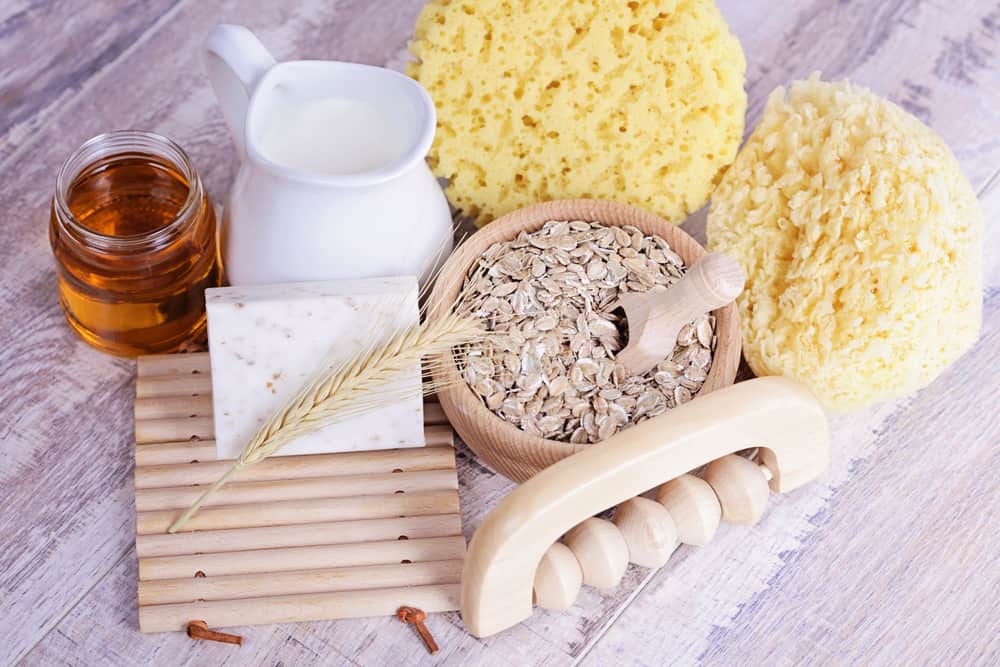
Mild heat rashes can commonly be treated at home. Here are a few tips to help relieve the symptoms:
Oatmeal Bath
An oatmeal bath can be a gentle and effective way to treat your skin. Oatmeal has anti-inflammatory properties that can help reduce redness, itching, and irritation, while also hydrating dry and sensitive skin.
Here is how to make an oatmeal bath:
To prepare an oatmeal bath, you will need the following:
- 1 cup of colloidal oatmeal (finely ground oatmeal that dissolves easily in water)
- Warm water
- Bathtub or container large enough to immerse the affected area
Here are the steps to follow:
- Get a container or bathtub large enough to soak the affected area.
- Add 1 cup of colloidal oatmeal (finely ground oatmeal that dissolves quickly in water) to warm water and stir well until the oatmeal is fully dissolved.
- Soak the affected area in the oatmeal bath for 10-15 minutes or until the water cools down.
- Gently pat the skin dry with a soft towel. Do not rub the affected area.
Repeat this process several times a day, as necessary, and avoid exposing the affected area to further UV radiation until it has healed completely. Additionally, it’s important to keep the skin moisturized with a gentle, fragrance-free lotion.
Cool Compresses:
You can use a cold compress to alleviate the symptoms, including inflammation, itching, and redness. This method is straightforward and effective. By reducing blood flow to the affected area, a cold compress can constrict blood vessels and soothe irritated skin.
To apply a cold compress, you will need the following:
- A clean towel or washcloth
- Cold water Ice (optional)
Follow these steps:
- Soak the towel or washcloth in cold water. You may also add ice to make it colder.
- Squeeze out the excess water.
- Place the cold compress on the affected area for 10-15 minutes.
- Take a 10-15 minute break, then reapply the cold compress as necessary.
This process can be repeated several times a day as needed. To avoid aggravating the skin and causing further irritation, avoid using hot water or heat packs.
Use Antibacterial Creams
If a rash becomes infected or is at risk of infection, using an antibacterial cream can be an effective treatment. The broken skin can quickly allow bacteria to enter, leading to further irritation and infection.
To use an antibacterial cream, follow these steps:
- Thoroughly clean the affected area using mild soap and warm water, and then pat the area dry with a clean towel.
- Apply a small amount of the antibacterial cream directly, following the instructions on the label.
- Gently rub the cream into the affected area until it is fully absorbed.
- Cover the affected area with a sterile bandage or gauze to prevent further irritation and protect the skin.
You can repeat this process several times a day, as needed until the problem has healed. Make sure to carefully follow the instructions on the label and not use more than the recommended amount of the antibacterial cream.
Aloe Vera
Aloe vera is a natural remedy that can provide relief. It contains anti-inflammatory properties that can help to reduce redness, itching, and inflammation caused by the rash.
- Clean the affected area thoroughly with mild soap and warm water. Pat the area dry with a clean towel.
- Cut a fresh aloe vera leaf and extract the gel from the leaf.
- Apply the gel directly to the rash, making sure to cover the affected area thoroughly.
- Gently massage the gel into the affected area until it is fully absorbed.
- Repeat this process several times a day, as needed, until the rash has healed.
If you do not have access to a fresh leaf, you can use a store-bought gel or cream. However, it is important to choose a product that is free of added fragrances and dyes.
Take an Over-the-Counter Anti-Itch Medicine
Over-the-counter anti-itch medicines can help alleviate the symptoms such as itching and irritation. These medicines are available in creams or ointments that can be applied directly to the affected area.
To use an over-the-counter anti-itch medicine, follow these steps:
- Clean the affected area with mild soap and warm water, then pat dry with a clean towel.
- Apply a small amount of the anti-itch cream or ointment to the rash, following the instructions on the label.
- Gently massage the cream or lotion into the affected area until fully absorbed.
You can repeat this process several times a day as needed until the rash has healed. It’s crucial to follow the instructions on the label and not use more than the recommended amount of anti-itch medicine
Keep the Area Clean
To promote healing and reduce the risk of infection, it is crucial to maintain cleanliness and dryness of the affected area. Refrain from scratching or picking the rash as it can lead to further irritation and infection. Furthermore, keep the affected area moisturized using a gentle, unscented lotion to soothe the skin and prevent further dryness.
Wipe With Hypoallergenic Wipes
Hypoallergenic wipes are an effective solution for cleansing and soothing irritated skin. They gently remove impurities like oil, sweat, or tanning product residue that may be present on the skin without causing any further irritation or damage. Hypoallergenic wipes can also provide hydration and reduce inflammation, resulting in a calming effect on the skin.
Avoid Further Irritation
Preventing additional irritation is essential as it can facilitate skin healing and minimize the likelihood of it becoming more severe or spreading.
When the skin is already inflamed or irritated, further irritation can aggravate the condition, causing more discomfort. In the case of a tanning bed rash, exposure to UV radiation has already led to dryness, irritation, and inflammation. More exposure to UV radiation or other irritants such as fragranced products or tight clothing can exacerbate the rash and impede the healing process.
Therefore, avoiding further irritation, such as wearing comfortable clothing and avoiding harsh skincare products, is crucial for faster and more effective healing. Moreover, keeping the affected area sterile and moisturized can help to lessen inflammation and prevent it from spreading.
Use Hypoallergenic and Natural Moisturizers
Natural and hypoallergenic moisturizers can be helpful in easing the discomfort you may feel. These moisturizers use gentle ingredients that are less likely to cause further irritation to the skin. They are also effective in hydrating the skin, which can reduce inflammation, redness, and restore the skin’s natural barrier.
It’s important to choose a natural and hypoallergenic moisturizer that is designed for your skin type. It should be designed for sensitive skin and free from ingredients that could potentially make it worse. Moisturizers containing ingredients like aloe vera, chamomile, or oatmeal are particularly useful in soothing irritated skin.
When should you see a doctor?
It is possible to treat at home, but taking preventative measures can help avoid it altogether. Proper care lets you achieve a sun-kissed look without worrying about rashes.
However, seeking medical attention is necessary if it is severe, spreading quickly, accompanied by fever or chills, not improving with at-home treatments, causing discomfort or affecting daily activities, or if you have a history of skin sensitivity or allergies.
A healthcare professional can recommend prescription-strength topical or oral treatments and address any underlying issues that may be contributing to the issue.




